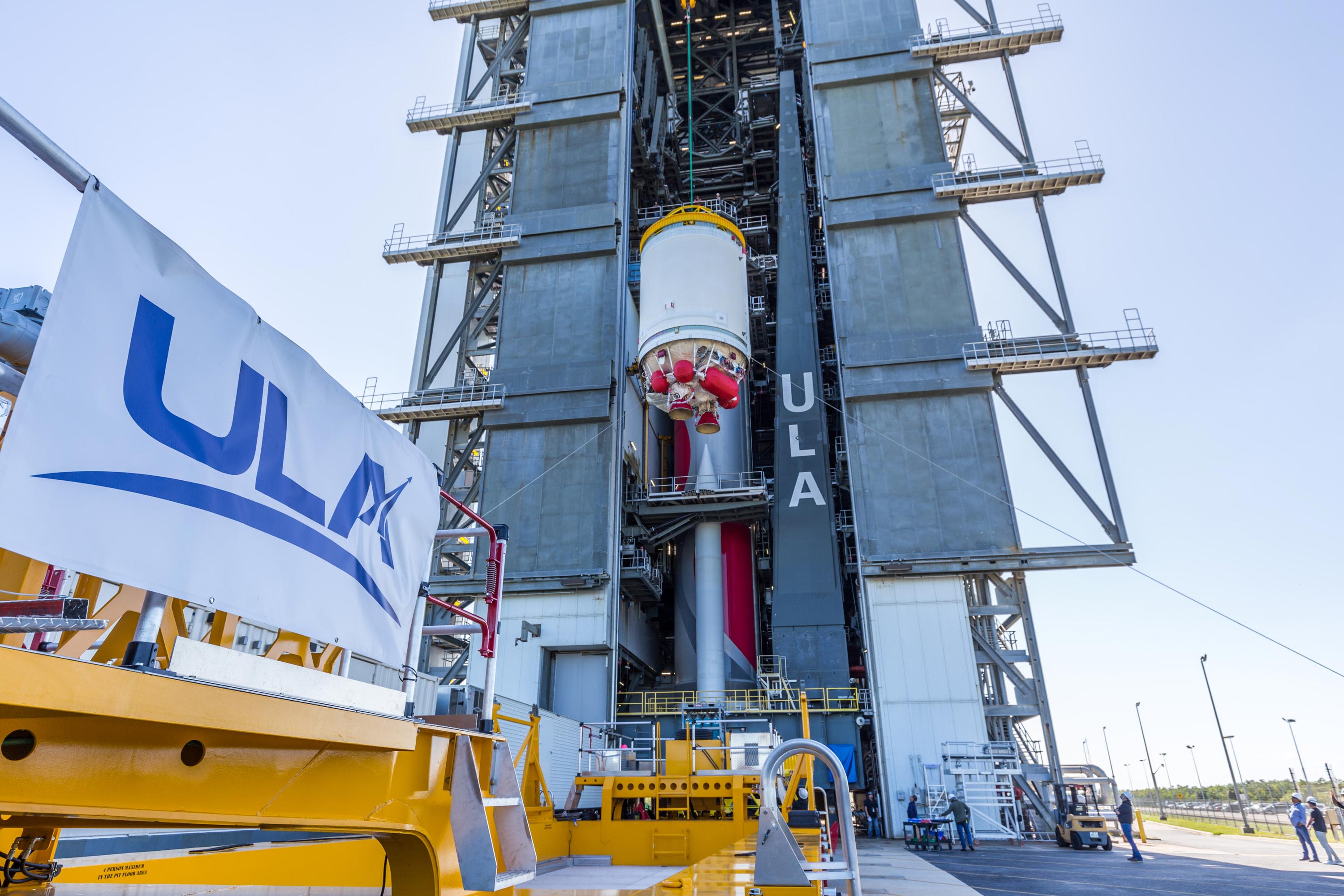
The United Launch Alliance’s Vulcan Centaur rocket should finally lift off for the first time next month. Can it compete with SpaceX?
A new rocket will soon take to the skies, the Vulcan.
It’s the latest vehicle from the long-standing United Launch Alliance (ULA), which once held a near monopoly on military launches and planetary missions for NASA, but has since been usurped, and is now up for sale. ULA is hoping its new fleet of vehicles will offer healthy competition in today’s launch market.
There’s little doubt who the major player is right now. In 2023, Elon Musk’s company SpaceX launched 96 times, accounting for more than 90% of US orbital launches this year. Their Falcon 9 and Falcon Heavy rockets dominate the launch market and, if successful, their upcoming Starship rocket might surpass that mantle.
ULA, however, has been ever-present in US launch for two decades, since forming as a merger between Boeing and Lockheed Martin in 2006. Its Atlas and Delta series of rockets have been used for a wide variety of government and commercial missions, with more than 150 launches over 17 years. Some notable highlights include the launch of NASA’s Perseverance rover to Mars in July 2020 and the OSIRIS-REx asteroid sampling mission launched in September 2016. Now the company is up for sale, with three bidders in the running — one of which is Jeff Bezos’ Blue Origin.
Partly due to the dominance of SpaceX and a changing market, ULA has focused its efforts on a new rocket — Vulcan Centaur — these past few years. The company is phasing out both its Atlas V and Delta IV rockets, the last of those two fleets, with the inaugural launch of Vulcan set for next week. Unfortunately for ULA, the launch has been beset by delays. “It’s been a long time coming,” says Phil Smith, a space industry analyst at the US firm BryceTech.
Vulcan was supposed to launch in 2019, but numerous issues have pushed back that date, including problems with the rocket’s oxygen and methane BE-4 engines, supplied by Blue Origin, with one engine exploding during a test in June. Those engines will ultimately end ULA’s reliance on the Russian built-engines used on its previous rockets, a partnership that ended following Russia’s annexation of Crimea in 2014 and the invasion of Ukraine in 2022.
A two-stage rocket measuring 202 feet tall, Vulcan will be capable of lifting up to 60,000 pounds to orbit. Tory Bruno, ULA’s CEO, said in a press call on November 15 that Vulcan was “very highly optimized” for reaching high orbits, noting the rocket was “much more capable, much more affordable and has a lot of flexibility” compared to ULA’s previous rockets.
Signifying that is its first launch, known as the Cert-1 mission — it is one of two certification missions required to launch national security missions — which will liftoff from Cape Canaveral in Florida no earlier than January 8. The primary payload on board is the Peregrine lunar lander, a nearly 3,000-pound machine that will touch down on the Moon equipped with various instruments, built by the US firm Astrobotic Technology and partly funded by NASA. Also on board is a “memorial spacecraft” from the US firm Celestis, called Voyager, which will carry human DNA and ashes into orbit around the Sun.
ULA’s ultimate goal is to launch two Vulcan rockets every month by the latter half of 2025, said Bruno. The rocket will not compete with SpaceX on reusability, with ULA opting only to attempt recovering and reusing the rocket’s first-stage engines, rather than the entire vehicle. However, according to Bruno, the rocket will still be competitive with SpaceX; it already has a “backlog of 70 Vulcan launches” over the next five years worth billions of dollars, including customers such as Amazon, which has booked multiple Vulcan launches to fly satellites for its Project Kuiper space internet mega constellation to rival SpaceX’s Starlink.
“The global launch industry has changed its character in the last 18 months,” said Bruno. “There’s more demand for launch than there are global launch vehicles available to do it, partly because of the withdrawal of Russia, and also because of the introduction of these mega constellations.”
Phil Smith believes the rocket can be competitive “but a couple of things need to happen” before that is the case. “One is it has to work,” he says. “Then it will prove itself out in the contracts that it’s got.” While ULA is unlikely to be able to compete with SpaceX on price, currently around $2,000 per kilogram for Musk’s company, additional factors such as reliability will be important. “There are other ways to evaluate competitiveness,” says Smith. “Customers don’t just look at pricing. Maybe Starship will be too much bang for your buck. Maybe you prefer the Vulcan Centaur for a particular mission type.”
“Havingthat mixofvehicles isimportant.”
ULA’s long-standing success in launching rockets might also play a part and could be a key selling point to one of its potential suitors.
“If I were buying a space business, I’d go look at ULA,” Bruno told Bloomberg in an interview in October. “It’s already had all the hard work done through the transformation. You’re not buying a Victorian with bad plumbing. It’s all been done. You’re coming in at the end of the remodel, so you can focus on your future.”
All eyes will be on next week's Vulcan launch and any impact it might have on a potential sale. Having once dominated the US launch market, ULA is now undoubtedly playing catchup to SpaceX and will hope Vulcan can be its new poster child as it seeks to reestablish itself as a major player. Doing so is beneficial not just to ULA, but for American launch as a whole, too.
“We’re always excited when a new vehicle comes online,” says Smith. “We need competition.”
Track the maiden flight of ULA's Vulcan rocket with Astrobotic's Peregrine Lunar Lander by downloading the Supercluster App for iPhone and Android.


 DogeHome
DogeHome Cryptopolitan_News
Cryptopolitan_News Coin Edition
Coin Edition BlockchainReporter
BlockchainReporter crypto.news
crypto.news Crypto Daily™
Crypto Daily™ BlockchainReporter
BlockchainReporter Optimisus
Optimisus






















